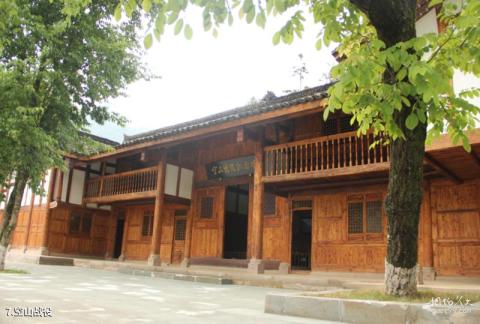
Introduction to the Battle of Kongshan: From March to June 1933, warlord Tian Songyao gathered 38 regiments with nearly 60,000 troops to launch a "three-way siege" on the newly established Sichuan-Shaanxi Soviet Area. Facing the powerful enemy, the Fourth Red Army adopted the strategic policy of "tightening its position, luring the enemy deep, and actively defending" to fight tenaciously against the enemy. In late May, the Red 10th Division, the Red 11th Division, the Red 12th Division and the Red 73rd Division concentrated their efforts in the Kongshanba area and adopted the tactics of cutting off the enemy's rear route, dividing and encircling them, and annihilated 7 enemy regiments with more than 5,000 people, and routed 6 enemy units. A regiment captured 2 enemy brigade commanders and wounded 1, captured 2 enemy regiment commanders alive, wounded 5 enemy regiment commanders, caused more than 5,000 enemy casualties, and captured about 20,000 enemy officers and soldiers below the enemy camp, making history. The famous "Victory in the Empty Mountains" and the overall victory against the "Three Route Encirclement and Suppression" enabled the Red Army to gain a firm foothold in the Sichuan-Shaanxi border area, thereby laying a solid foundation for the Sichuan-Shaanxi revolutionary base area. After Li Xiannian's death, some of his ashes were scattered in Huangyanggou, Zhongba Village, Kongshan Township.
